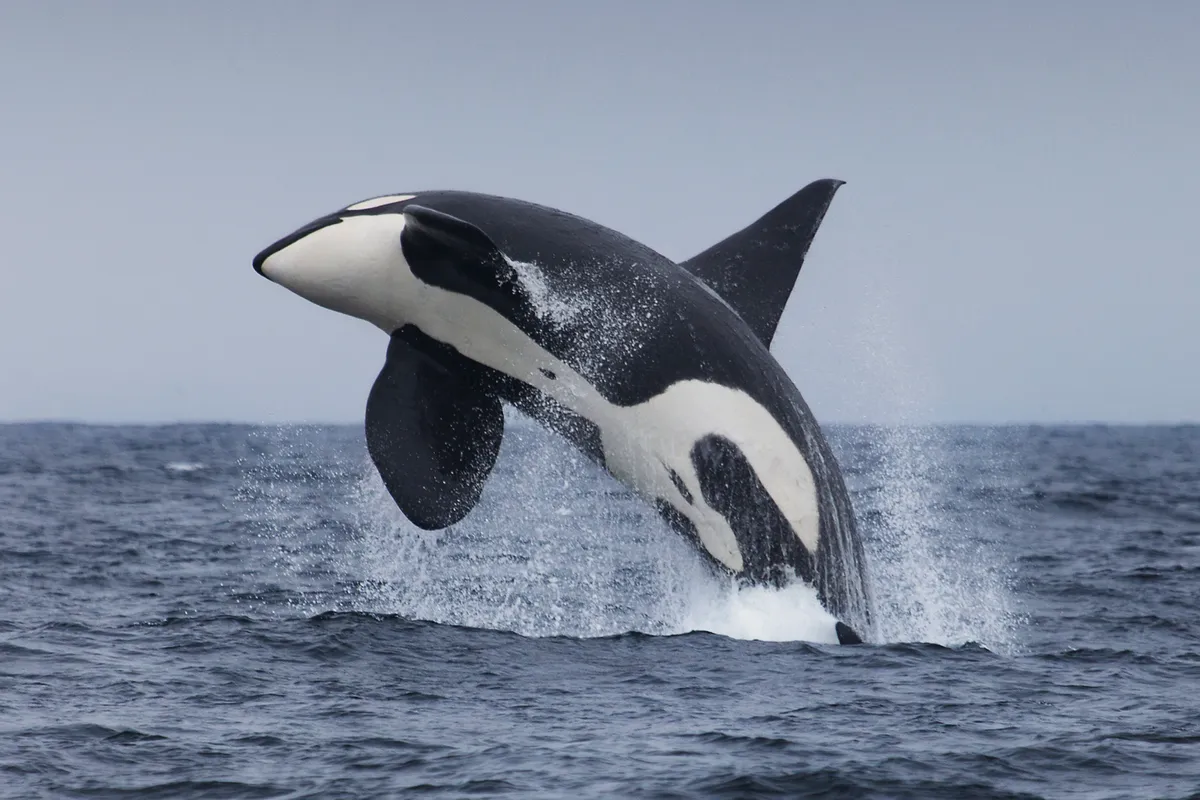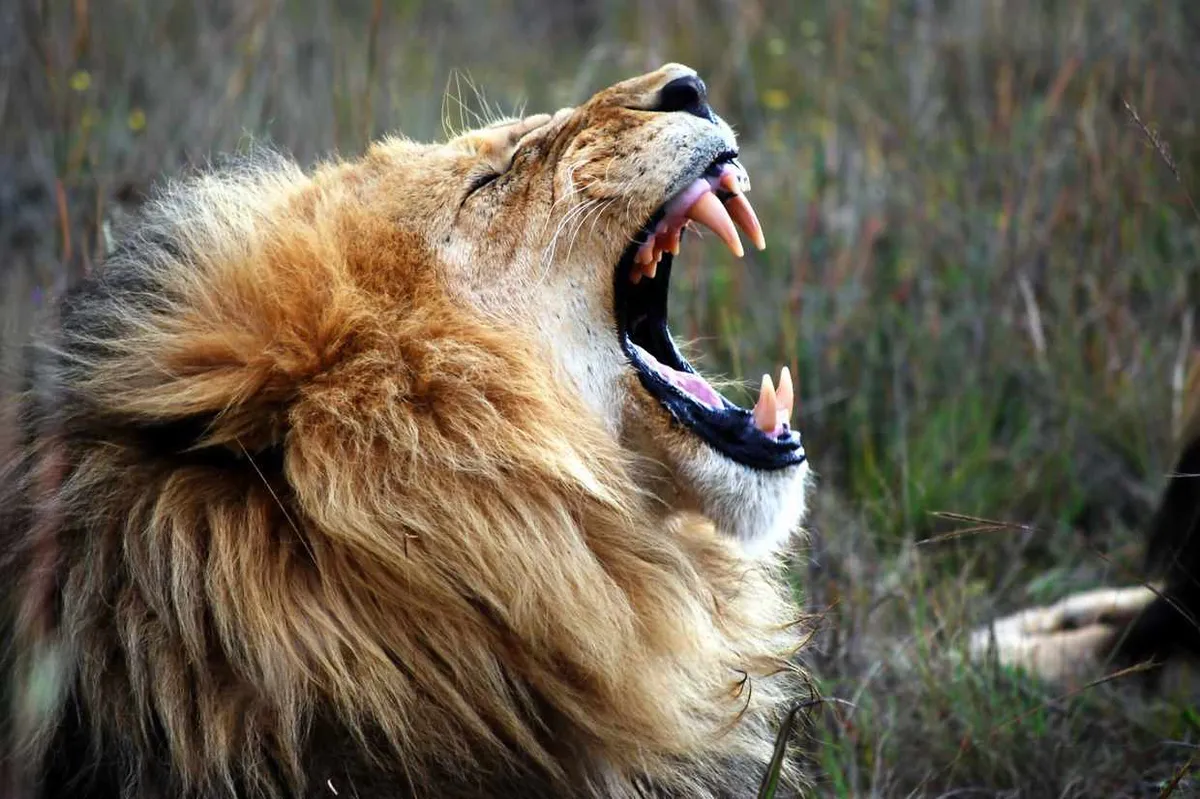A typical adult human bites with a force of 500 newtons (equivalent to a weight of 50kg). That’s plenty for an omnivorous ape that has long used tools to hunt and fire to soften meat and root vegetables, says Stuart Blackman.
At a push, we can just about break into a hazelnut, although most of us prefer to reach for the nutcrackers. And there’s always the risk of losing a tooth just by chewing a toffee. Many other species put their teeth to more vigorous use - to pierce skulls, crack bone, and dismantle water buffaloes. Here’s our pick of the animal kingdom’s strongest bites…
Strongest bites
Saltwater crocodile

It’s perhaps not surprising that the world’s largest living reptile - a brutal ambush predator that exceeds 6m in length and a tonne in weight, crushes bone, shatters turtle shells and dismantles water buffaloes - is capable of delivering the most powerful bite ever measured in any animal.
- Who would win in a fight between two of the world's most fearsome predators – a saltwater crocodile or a great white shark?
- 9 animals that could take on (and probably kill) a saltwater crocodile
Native to northern Australia and Southeast Asia, the saltwater crocodile inhabits coasts, estuaries and rivers, and can make long journeys across the open ocean.
In 2012, researchers recorded one saltie biting with a force of 16,460 newtons (equivalent to 1.6 tonnes). To be on the receiving end of that might feel something like lying between two planks of wood spiked with protruding nails and then parking a Toyota Camry on top.
The muscles that open the mouth are far weaker than those that close it. A human can keep a saltie’s jaws closed using only their hands or a roll of duct tape.
Great white shark

The saltie may not hold the record for long. Bite force has been measured directly in relatively few species, and there are good reasons to suspect there are challengers out there nipping at the saltie’s heels. The great white shark is a prime candidate.
Theoretical estimates based on the species’ anatomy suggest that the biggest specimens generate bite forces of up to 18,000 newtons.
Three million years ago, though, there was another predatory shark that makes this look like a tentative nibble. At three times the length of the biggest great whites, megalodon’s bite might have been five times as strong, although these estimates are based solely on analysis of their teeth and vertebrae, the only parts that are preserved as fossils. Megalodon is a contender for the strongest bite in all of evolutionary history, although there’s another extinct carnivore that might have something to say about that…
Tyrannosaurus rex

We’d have to go back 66 million years to measure the bite force of t-rex directly. And yet we still have a better fossil record to go on compared to megalodon, including a number of well-preserved skulls.
Biomechanical studies suggest its banana-shaped, bone-crushing teeth could deliver a force of up to 57,000 newtons. That’s more than three times what a saltwater crocodile can manage and roughly equivalent to a grand piano being dropped on your head from a height of 1.5m. It’s the highest estimate for any terrestrial animal, past or present.
- The 10 deadliest dinosaurs to have ever roamed the Earth: we rate these ultimate killing machines
- It was 4 metres tall, twice as heavy as an elephant, had teeth 30cm long and needed 140kg of meat per day - meet the fiercest, deadliest predator of all time
Orca

Another animal that might claim the strongest bite among living species is the orca. Certainly, the title is claimed on its behalf in many corners of the Internet. A statistic that pops up regularly is that these 8-tonne toothed whales can apply a bite pressure of 19,000 pounds per square inch, which (if we assume the biting surface of its 50-odd teeth adds up to 20 square inches) works out as something like 1.5 million newtons.
- “No other predator is able to challenge them” – this deadly, intelligent ocean killer works in a team to stun, submerge and launch at its prey
- Are there killer whales in UK waters?
That’s more than 100 times stronger than a saltwater crocodile’s bite, which is one good reason to be sceptical. Another is that we haven’t been able to trace the source of the claim. As far as we can tell, there has been little attempt to estimate, let alone measure it. There is also the question of why an orca would need a particularly strong bite. It is much bigger than the animals that make up the bulk of its diet – seals, sealions, dolphins and fish - while larger prey such as humpback calves tend to be immobilised with repetitive butting and ramming.
Hippopotamus

The strongest bites don’t all belong to predators. The hippopotamus is a strict vegetarian, and yet it is armed with foot-long (30cm) tusk-like canine teeth, a huge gape and a bite force that is widely reported to reach 8000 newtons, which would be by far the strongest bite of any mammal. We’ve not been able to trace the source of this figure.
If it all seems a bit excessive for an animal whose natural diet consists of riverside vegetation, it’s because a hippo’s bite is designed for fighting, not feeding. Males are highly territorial and vigorously defend their stretch of the river from rivals . Opponents lunge at each other with mouths wide open, slashing and stabbing with their tusks . Disputes can last for many hours or even days and may end in death for the loser.
Females are more gregarious, but they still find a use for their massive maws, wielding them in defence against Nile crocodiles, which will gladly take a hippo calf given the chance.
Tasmanian devil

Absolute force is only one way of slicing through the issue of bite strength. Some rather small animals are capable of biting well above their weight.
The Tasmanian devil is a pugnacious, nocturnal marsupial famous for its spine-chilling scream . About the size of a Jack Russell terrier (6-8kg), it is primarily a scavenger, but can also take down live prey much bigger than itself, such as wombats and wallabies. Its disproportionately large, broad head is packed with jaw muscles that allow it to tear through hide and crush bones so that nothing goes to waste.
Its bite force, estimated at around 418 newtons, is up there with that of a rottweiler-sized cheetah. Indeed, it’s thought to be strongest bite, relative to body size, of any mammal.
Black piranha

The black piranha, though, is not a mammal. And, weight for weight, even the Tasmanian devil cannot match its bite strength.
One individual weighing a little over a kilogram has been measured biting with a force of 320 newtons. Adjusted for size, that’s about ten times that of a saltwater crocodile.
- It barks like a dog, has razor-sharp teeth and is a horror movie favourite – but is this scary-looking fish just misunderstood?
- Can piranhas actually kill a human?
This denizen of tropical South American rivers possesses very short jaws that maximise the mechanical advantage of its muscles. Combined with the razor-sharp cutting edges of its teeth, this allows it to slice straight through bone, as many a nine-fingered swimmer has discovered.
- Deadliest river animals: 10 fearsome aquatic creatures that can deliver a lethal punch
- 10 deadliest fish on the planet: you won't want to meet these fearsome species underwater
Lion

It’s a strong field—but when it comes to bite force, the lion is the strongest felid. Or it might be the tiger. Or the jaguar. It all depends on what you’re measuring.
The cat family is packed with apex predators you really don’t want to get bitten by. In absolute terms, lions and tigers deliver the greatest force. Estimates for both species range to over 4,000 newtons. But while tigers edge it when biting with the prominent canine teeth at the front of the mouth, the order is reversed when they use the flesh-shearing ‘carnassial’ teeth further back.
- 10 animals that can kill a lion
- Which big cat has the strongest bite? And just how deadly is that bite?
This difference might stem from their respective hunting styles. Tigers work alone, so need a quick kill if their prey is not to fight back or escape. A single piercing bite with the canines to the skull or neck is just the job. Lions, though, hunt as a team, overwhelming prey through weight of numbers, and the efficiency of the execution is less important than the ability to shear through the tough skin of larger prey.
Meanwhile, the jaguar has the strongest bite of any cat relative to its body size, which is all the better for penetrating the defences of armoured prey such as turtles and caimans.
Ostrich

The ostrich may not have teeth, but it still holds the record for the strongest recorded bite measured in any bird. In some ways, it’s an unlikely winner: the tiny head perched on the end of a long, graceful neck doesn’t look designed for power. And yet the biggest of all living birds can close its beak with a force of 430 newtons.
That’s comparable to the bite of an average-sized domestic dog, and well in excess of species such as parrots, whose bills at least look like they could do some serious damage.
- Discover the 10 biggest, heaviest birds in the world: Towering giants that don't always get airborne
- What is the strongest bird in the world? Meet the avian champion weightlifters
Spotted hyena

Most estimates of spotted hyena bite force range between 500 and 1,000 newtons, which is perfectly respectable for an opportunistic predator and scavenger that is capable of crushing bones with its teeth. However, there is the tantalising possibility that these estimates are spectacularly conservative, because in the year 2000, the bite of a single individual was measured at 4,500 newtons.
- Could a hyena take on a lion? Nail-biting video shows close and fiercely-fought battle between these carnivorous predators
- Why female spotted hyenas rule the pack
Quite understandably, this outlier is treated with caution by biologists, but in a major respect, it makes perfect sense. Spotted hyenas are capable of shattering some of the strongest animal bones of them all, including the femurs of large ungulates such as zebra, wildebeest and buffalo.
And calculations suggest that requires forces in the thousands rather than hundreds of newtons. So it might yet turn out that the spotted hyena has the strongest bite of all living terrestrial carnivores.
- The deadliest bites on the planet: These animals crush, slice or inject their victims, drain their blood or dismantle them piece by piece
- Deadliest females: 11 ferocious female animals that you wouldn't want to mess with
- 10 deadliest animals to humans - discover the world's most lethal creatures
- Deadliest animal traps: From honeytraps to booby traps here's 10 ingenious, shocking – and ruthless – ways predators lure prey to their death





